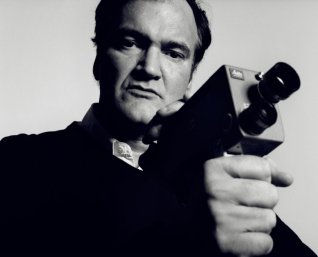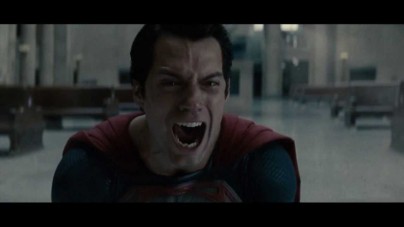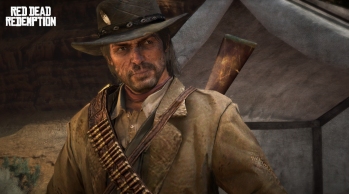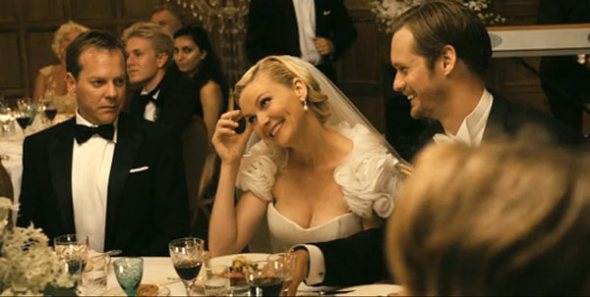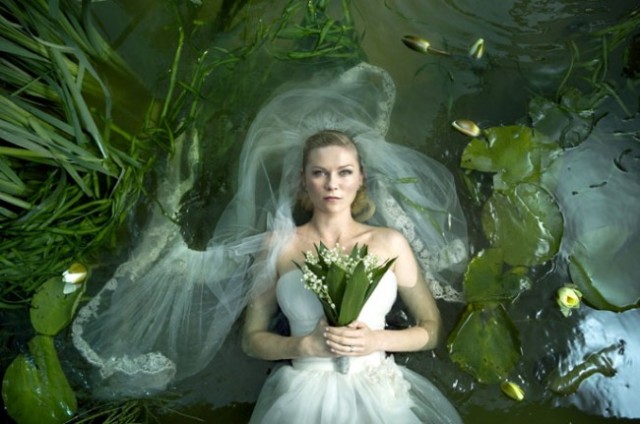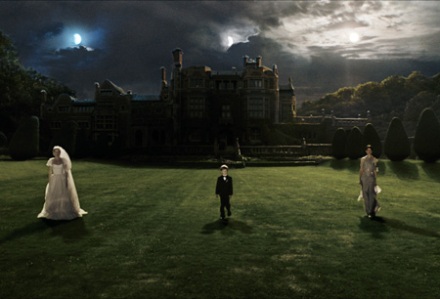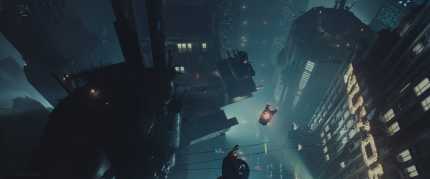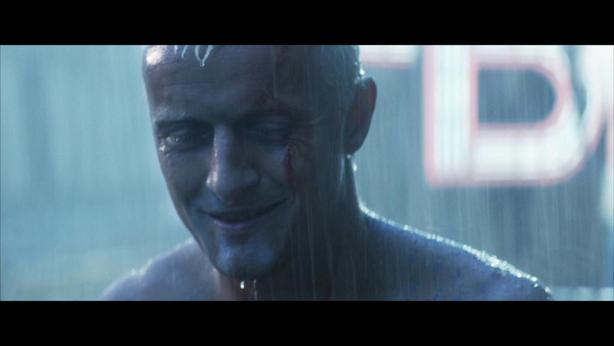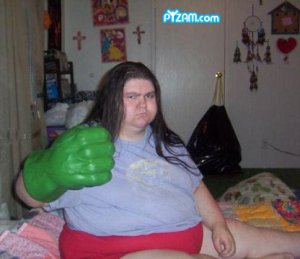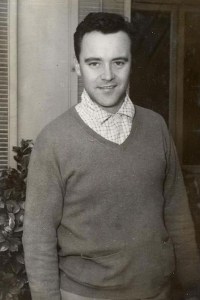With Gravity now out in theaters and being one of the most original films in recent memory, let’s hop back into the world of studio executives who love to hash out remakes every year instead of searching for fresh content. Some of these remakes have been strong (Star Trek: Into Darkness) and some of them have been bombs (The Lone Ranger).
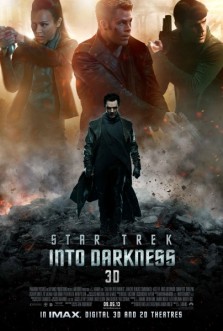

Recently I watched The Grapes of Wrath (1940), directed by John Ford and starring Henry Fonda, which focuses on a family in midwestern America during the Dust Bowl and Great Depression. Seeing as our current economy isn’t doing so hot, it was very interesting to compare the messages within The Grapes of Wrath to what we are going through now as a nation. It’s also fascinating to view the remake of this movie through the eyes of the one medium that tends to profit during harsh economic periods: cinema.

Why It Should Be Remade:
As I stated above, this film is ripe for a remake due to the similarity between the economies of the 1930’s and late 2000’s. While most audiences desire to escape the darker aspects of reality at the movie theater, sometimes people need to be reminded of the truth in which they are living in. Unfortunately, instead of fighting giant Kaiju with a motorcycle gang member, most people have to get up and work two jobs or spend the day applying for employment. Also, there is a ripe picking of a myriad of directors right now who are making excellent films consistently. Every once and a while even the most shallow cinema goer needs a strong dose of reality and why not use one of the most creative and artistic mediums of our time? The Grapes of Wrath also helped solidify the legitimacy of Henry Fonda and there are also numerous talented actors in their prime right now that would be perfect for roles in a remake. This remake should stick heavily to the source material (the original novel) and really establish the setting visually, a’la how the Coen brothers crafted the feel of the old west by using the written work as the core of the script in True Grit (2010). 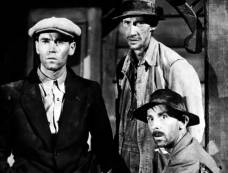 The tone and setting should not be modernized with coarse language or weakly rely on a sex scene to advance the emotional depth of the film. Embracing an organic, purposeful cinematography and slower paced, character driven editing would be the best route to breathe new life into a reused idea while still honoring the original style.
The tone and setting should not be modernized with coarse language or weakly rely on a sex scene to advance the emotional depth of the film. Embracing an organic, purposeful cinematography and slower paced, character driven editing would be the best route to breathe new life into a reused idea while still honoring the original style.
Who Should Direct: Darren Aronofsky
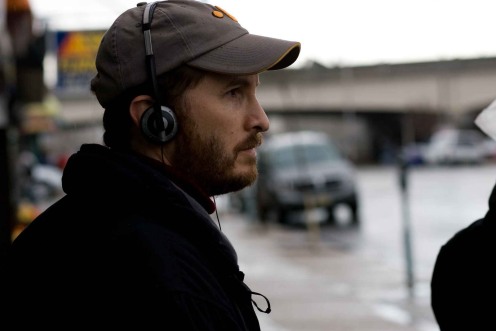
Darren Aronofsky isn’t known for being too lighthearted or afraid to delve into the harsh realities of a sinful human nature. His take on abusing prescription medication and using other dangerous drugs in Requiem for a Dream is intense, dark, sorrowful, and impacting. In modern media, it can be easy to sugar coat recreational drug use through comedy or a lack of consequences for the users on screen. Aronofsky truly revealed the nasty interior of human morality through a trippy, claustrophobic cinematography, strong actors, and an unsettling soundtrack that only intensified the tone.He also recently took on a well known ballet and turned it into a sharp look at controlling familial relationships, unhealthy desires for success, and emotional manipulation.
Grapes of Wrath would need a director that could establish a touching connection with the audience through relatable characters and settings that are reflective of today’s culture but masked by period appropriate mis-en-scene and music. With Aronofsky’s soon to be released Noah, the director reveals that he is astute at presenting timeless philosophical and moral issues with deep characters supported by method acting which would be necessary for a gut-wrenching remake like The Grapes of Wrath.
The New Tom Joad: Michael Fassbender

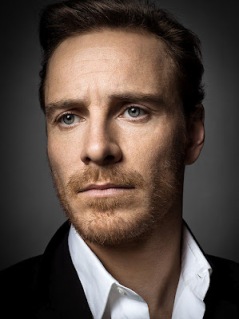
Henry Fond gave Tom Joad a violent, powerful, firm visualization in the original and Fassbender would do the same for the remake. Fassbender is known for intense roles, as seen in Hunger and Shame, and would naturally bring the dangerous confidence of a man fresh out of prison who has to survive in an economic collapse. Most of his films require him to be a multifaceted character that may be a protagonist with flaws (or anti-hero, such as in Shame) or an antagonist with empathetic motivation (X-Men: First Class). By portraying a complicated character like Tom Joad with a bold demeanor that Fassbender typically displays in most of his onscreen counterparts, Steinbeck’s original representation of the social and moral pressure facing men during the Great Depression would shine. My only worry about Fassbender would be harnessing the midwestern dialect and being able to escape some of the celebrity status that he now brings to his roles. However, I don’t think there is any other actor that can successfully and simultaneously bring charm and danger to the silver screen like Michael Fassbender.
The New Reverend Jim Casy: Christian Bale

Now, I’m a little wary about casting such a high profile actor in this supporting role as well, but I think he would work more on screen than he sounds on paper. I know the “cool film blogger” would’ve used a more indie or lesser known actor that’s on the rise or something. First of all, YOU DON’T EVEN KNOW ME, second of all, I get it but I think that this film needs the highest caliber actor, just as Star Wars needed Sir Alec Guinness. Even though everyone automatically thinks of Batman whenever Christian Bale is mentioned, let’s take a look at some of his work that would support his role in the remake of The Grapes of Wrath. Jim Casy, in both the book and the 1940 film adaptation, is a preacher that has lost everything and given up on his spiritual beliefs. He quickly admits to acts of sexual seduction during his time as a reverend and personifies the internal moral dilemma that existed in many people at the time.
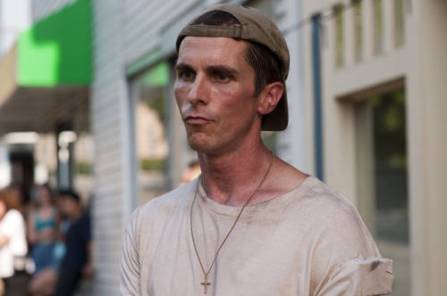
During the 1930’s, Christianity was still a large influence on culture and was especially prevalent in rural, agricultural communities, so the fact that Jim Casy so strongly denounces his religion and shows an active sin life as a pastor reflects that many at the time really had serious theological issues due to external circumstances. Bale has shown his acting prowess at being a character that struggles with doing what’s right and doing what’s necessary. Having Bale play Casy would allow for a deeper take on the ex-preacher instead of tending to portray religious figures with doubt as being unintelligent or wholly selfish. In The Fighter, Bale plays Dicky Eklund, a low class boxing trainer that struggles with drugs, and provides a character with many extreme flaws a smart and likable side as well. I could write more about how he has recently been taking supporting roles (The Fighter, American Hustle, Out of the Furnace), his history of method acting (Rescue Dawn, The Machinist), his experience in playing a minister (The Flowers of War), or the depth at which he plays all of his characters (American Psycho) , but I feel like enough has been said already.
The New Muley: Garret Dillahunt
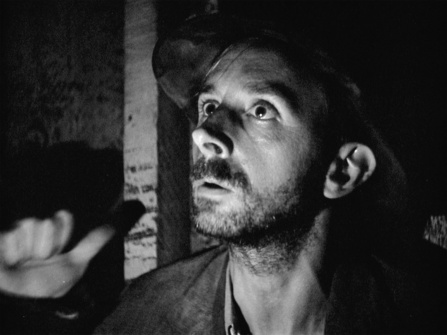
This guy is most definitely a character actor as he plays similar versions of the same role in almost every movie he’s in. He does play a more typical role in Raising Hope yet he always brings that awkward sympathy to his on screen personas. In Steinbeck’s The Grapes of Wrath, Muley is the epitome of disillusioned, desperate, and dejected (and apparently attracts accurate alliteration) (wow, thanks Mrs. Mills)) and Dillahunt mastered the nervous, emotionally wrecked type in The Assassination of Jesse James by the Coward, Robert Ford (whew!). 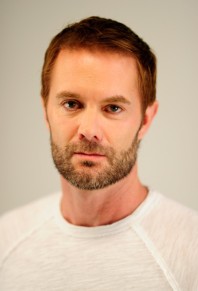 Muley gets hit with the reality that no matter what he does, he has no control over the fate of his livelihood and land. This is extremely traumatic due to the individual association with freedom that the midwest of the United States usually connotates and the forceful way the American dream was shattered during the Great Depression that should resonate with movie goers today. Dillahunt is fantastic as Ed Miller in Jesse James and truly creates a character that is sympathetic, broken, and pitiful. The delivery and timing of lines by Dillahunt is also very similar to the demeanor of John Qualen, the actor playing Muley in the original film. I believe that an actor as used to these character types as Garret Dillahunt would be the perfect supporting character to nail the serious tone of the remake.
Muley gets hit with the reality that no matter what he does, he has no control over the fate of his livelihood and land. This is extremely traumatic due to the individual association with freedom that the midwest of the United States usually connotates and the forceful way the American dream was shattered during the Great Depression that should resonate with movie goers today. Dillahunt is fantastic as Ed Miller in Jesse James and truly creates a character that is sympathetic, broken, and pitiful. The delivery and timing of lines by Dillahunt is also very similar to the demeanor of John Qualen, the actor playing Muley in the original film. I believe that an actor as used to these character types as Garret Dillahunt would be the perfect supporting character to nail the serious tone of the remake.
The New Ma Joad: Kathy Bates
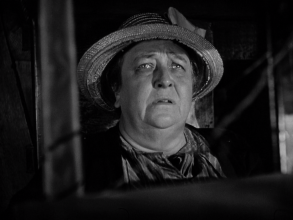
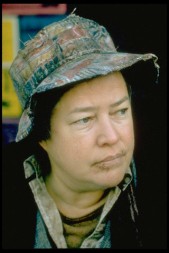
This is an obvious one. I mean, is there any role more naturally suited for Bates? Ma Joad is a very tough yet tender character and is a reflection of how the women had to adapt and endure to be an emotional anchor for families facing hard times together. Bates automatically brings that sternness and quiet strength to almost all of her characters, yet she also has the talent to be kind and understanding. In Fried Green Tomatoes, Bates plays an emotionally vital role that required deep sadness mixed with a strong, forced hope for better times, similar to how women of the Great Depression felt when their possessions were gone and the protected homestead had been violated. Actually, Bates filmography in general mirrors a tendency to play strong women in tough situations, such as Revolutionary Road and Midnight in Paris and show her light comedic side in work like Rat Race and The Office. Kathy Bates would bring a likable, brave, real Ma Joad to the screen as the emotional core of the Joad family.
There you have it. That is my official take on remaking John Ford’s The Grapes of Wrath (while I was writing this I started thinking of how I would remake this with an update and have the same story take place with an African American family that’s affected by the auto industry in modern day Detroit, but I’ll write that later if I get enough good feedback). And I do realize it’s been almost 2 years since my last post, but don’t worry. I hope to keep this as a semi (notice I said semi) frequent hobby. Stay safe out there and Godspeed.
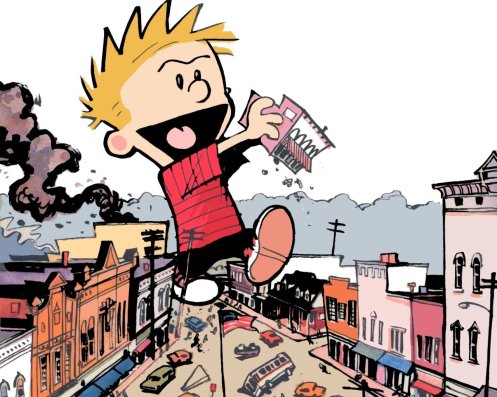
Posted in Radical Remakes
Tags: book, cinema, dark, darren aronofsky, entertainment, film, grapes of wrath, hollywood, movies, remake
